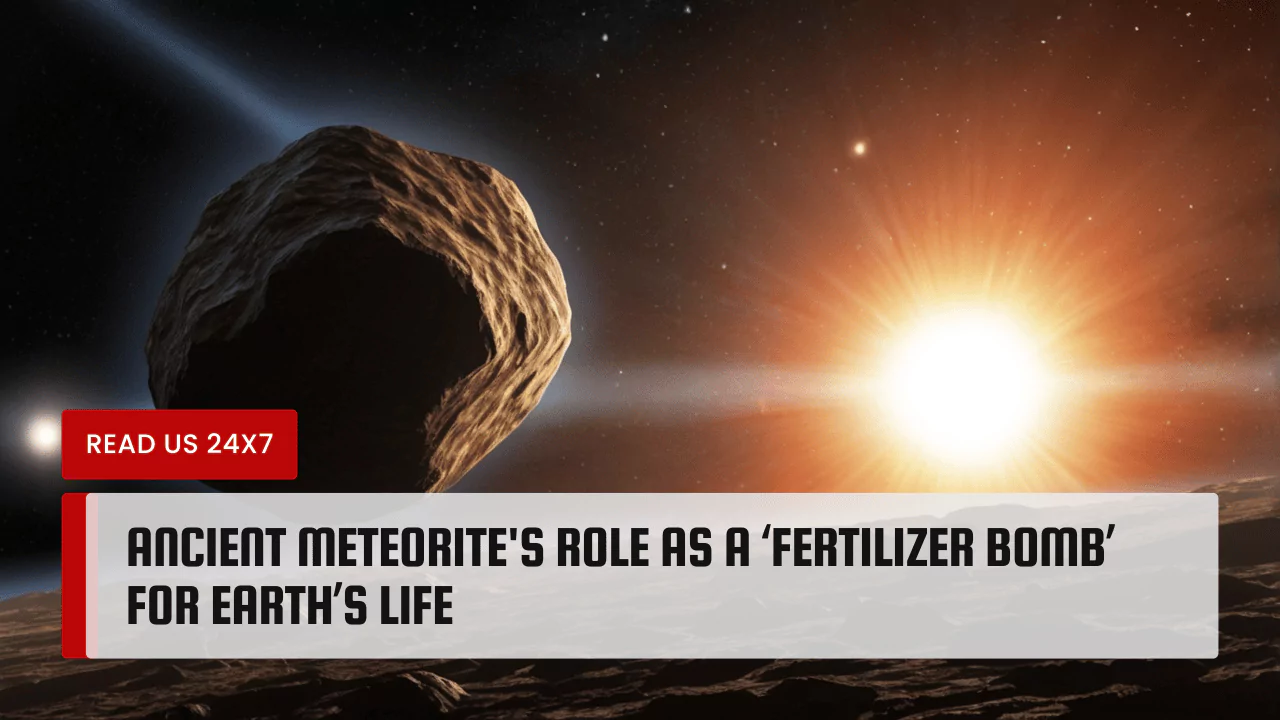A massive meteorite hit Earth around 3.3 billion years ago. Instead of causing destruction, it helped life thrive. This ancient space rock, named S2, acted like a fertilizer bomb, promoting the growth of early life forms.
The Impact Event
The S2 meteorite was very large. It was about 200 times bigger than the meteor that caused the extinction of dinosaurs. When S2 struck Earth, it created a huge tsunami and lots of heat. This impact happened in shallow waters off the coast of what is now Cape Cod.
The power of this impact changed the environment. It stirred up the ocean floor and created waves. These massive waves carried materials inland and mixed things around in the ocean.
Effects on Life
Around this time, life on Earth was very simple. It mostly consisted of tiny single-celled organisms like bacteria and archaea. The heat from the meteorite made the upper layers of the ocean boil away. This event created a thick cloud of dust. The dust covered the Sun for a while, which made it tough for some life to get energy from sunlight.
However, some tiny organisms, known as iron-metabolizing bacteria, thrived. The tsunami brought iron from deep in the ocean to shallower waters. This iron was essential for these bacteria. They used it as food, which helped them grow rapidly.
Phosphorus also played a crucial role. Erosion from land brought more phosphorus into the ocean. Some scientists believe the impact may have brought even more phosphorus directly to Earth. This increase in available phosphorus encouraged certain types of bacteria to flourish.
A New Environment
The environment created by the meteorite impact was unique. The waves mixed nutrients into one area, allowing tiny organisms to grow. It opened up new ecological niches. With more iron and phosphorus, life could use these nutrients better than before.
The ancient ocean became a better home for these simple organisms. They responded to this change by increasing their numbers. This population boom resulted in a variety of life forms.
The Benefits of the Disaster
While many think meteorite impacts are only harmful, this event showed otherwise. This ancient impact helped support life, especially when Earth was still developing. The situation allowed microorganisms to adapt and grow. These simple life forms built the foundation for more complex life.
Scientists now believe that such impacts might have similar effects throughout Earth’s history. This idea challenges the traditional view that impacts are only destructive. Instead, they could create new opportunities for life.
Evidence of Impact
Scientists found evidence of the S2 meteorite in South Africa. They studied rock samples and looked closely at the chemicals within them. This research helped paint a picture of what happened billions of years ago.
By investigating various isotopes of carbon, scientists discovered clues about the environment and the microorganisms that lived during that time. The careful analysis of sediment showed how life adapted both before and after the S2 impact.
Importance for Life’s Evolution
The S2 meteorite is an important piece of Earth’s story. It played a critical role in shaping early life. The presence of iron and phosphorus spurred the growth of bacteria, leading to more complex life forms later on.
This event is a key moment in understanding how life evolved on Earth. It reminds us that sometimes, disasters can lead to new beginnings. The influence of impacts may be a consistent theme throughout Earth’s history, helping life adapt and thrive.
Future Research
Scientists continue to explore the area where the evidence for the S2 meteorite was found. They are looking for more clues about Earth’s early days. Each discovery can help fill in gaps about the history of life on our planet.
By examining ancient impacts, researchers aim to learn how life responded to environmental changes. These studies provide insights into the resilience of life. They also help explain how life can rise from difficult circumstances.
Conclusion
The S2 meteorite showed a different side of destruction. Instead of wiping out life, it acted as a fertilizer bomb. It allowed early organisms to grow and thrive. This ancient event reminds us that nature can be surprising. Sometimes, great challenges can lead to wonderful opportunities for growth. Understanding such moments in Earth’s history helps us appreciate the complex web of life on our planet today.



